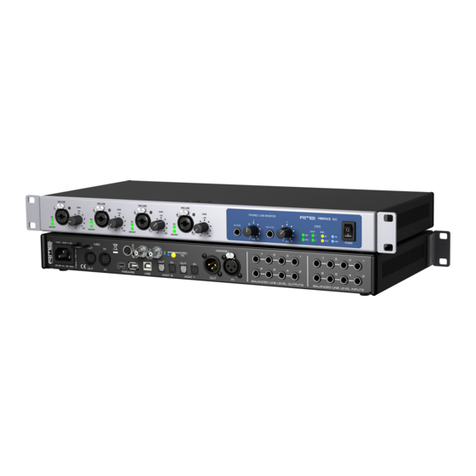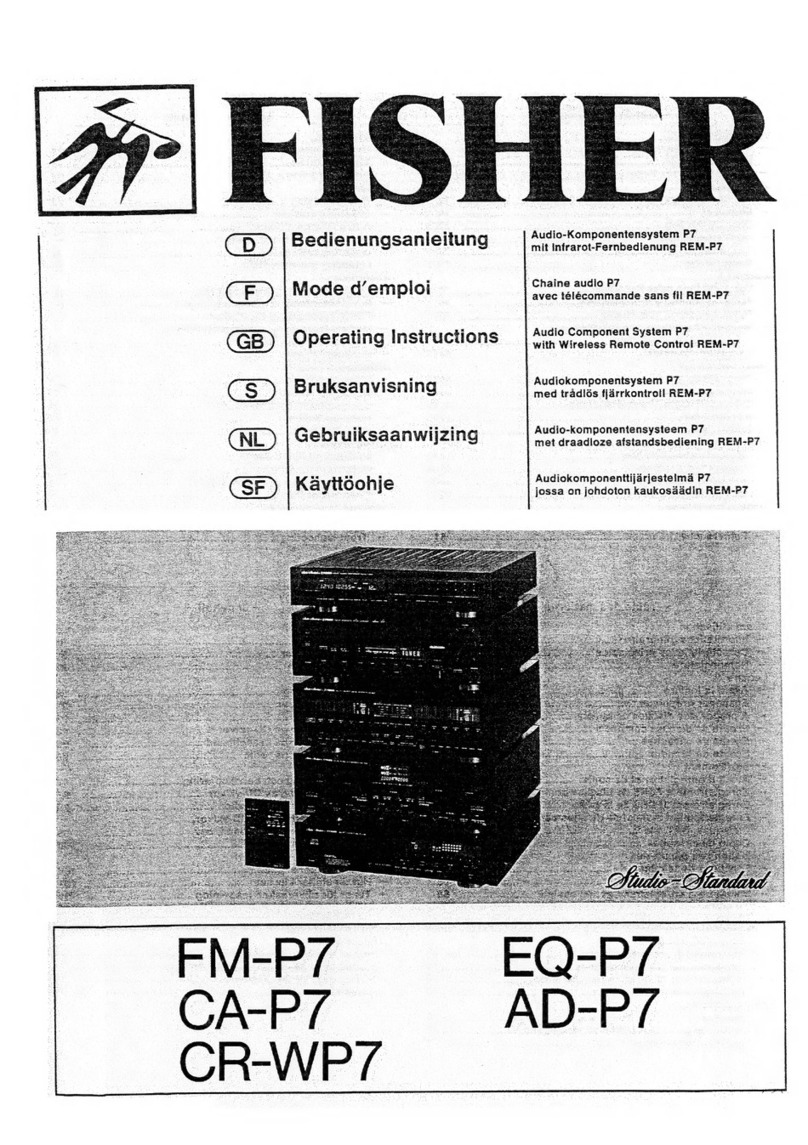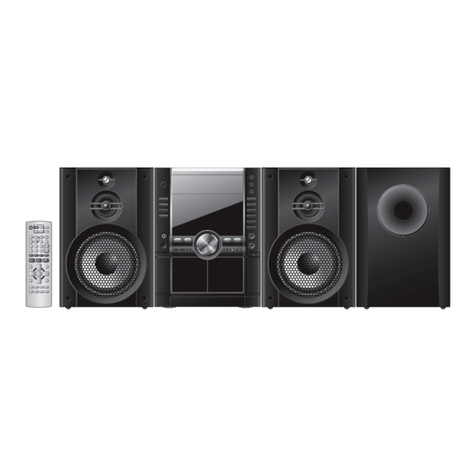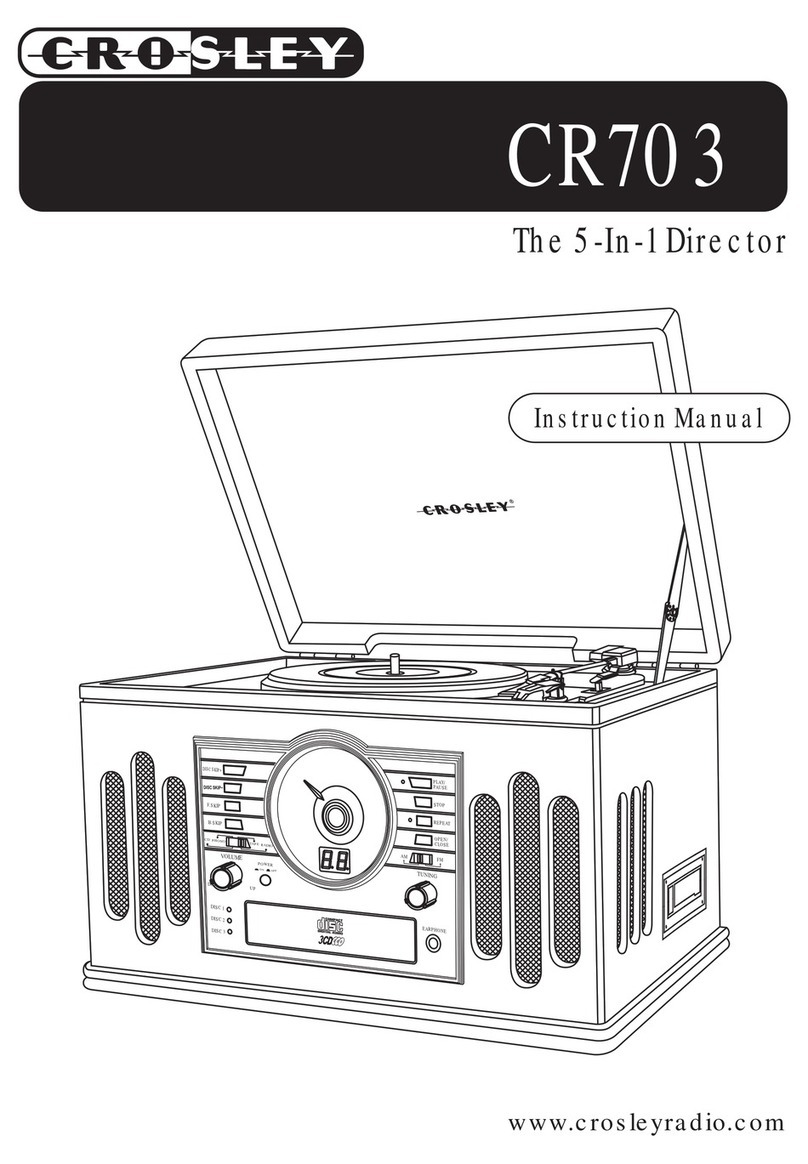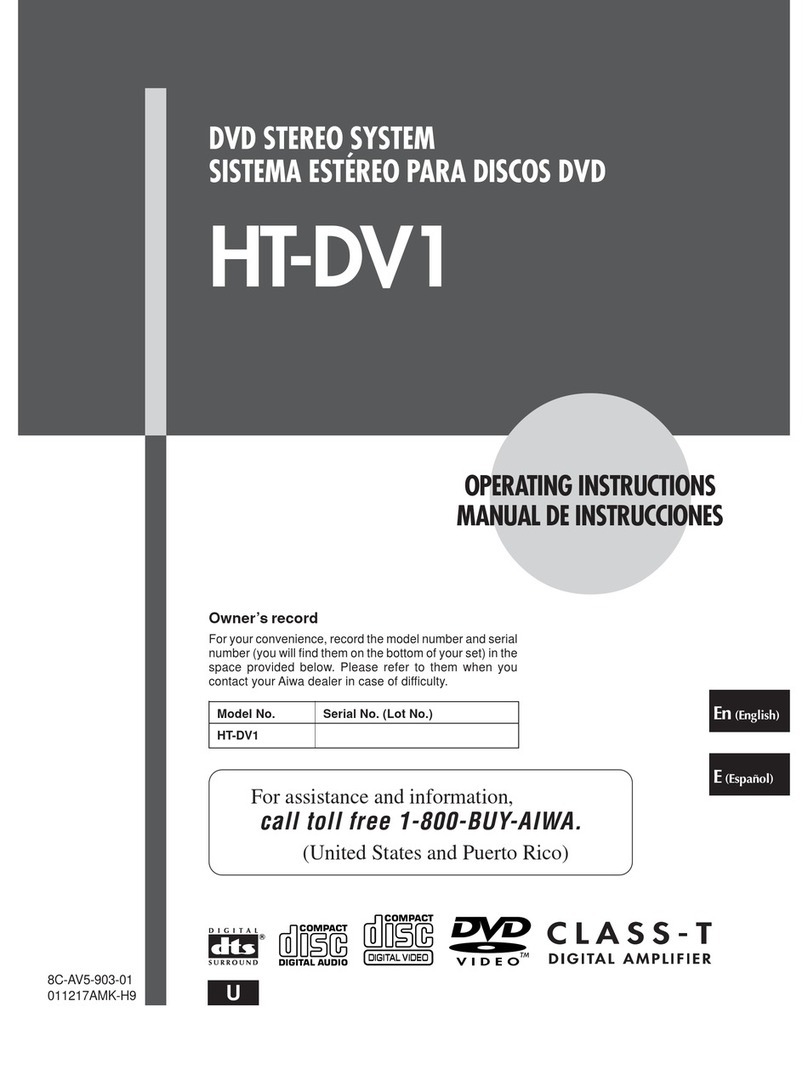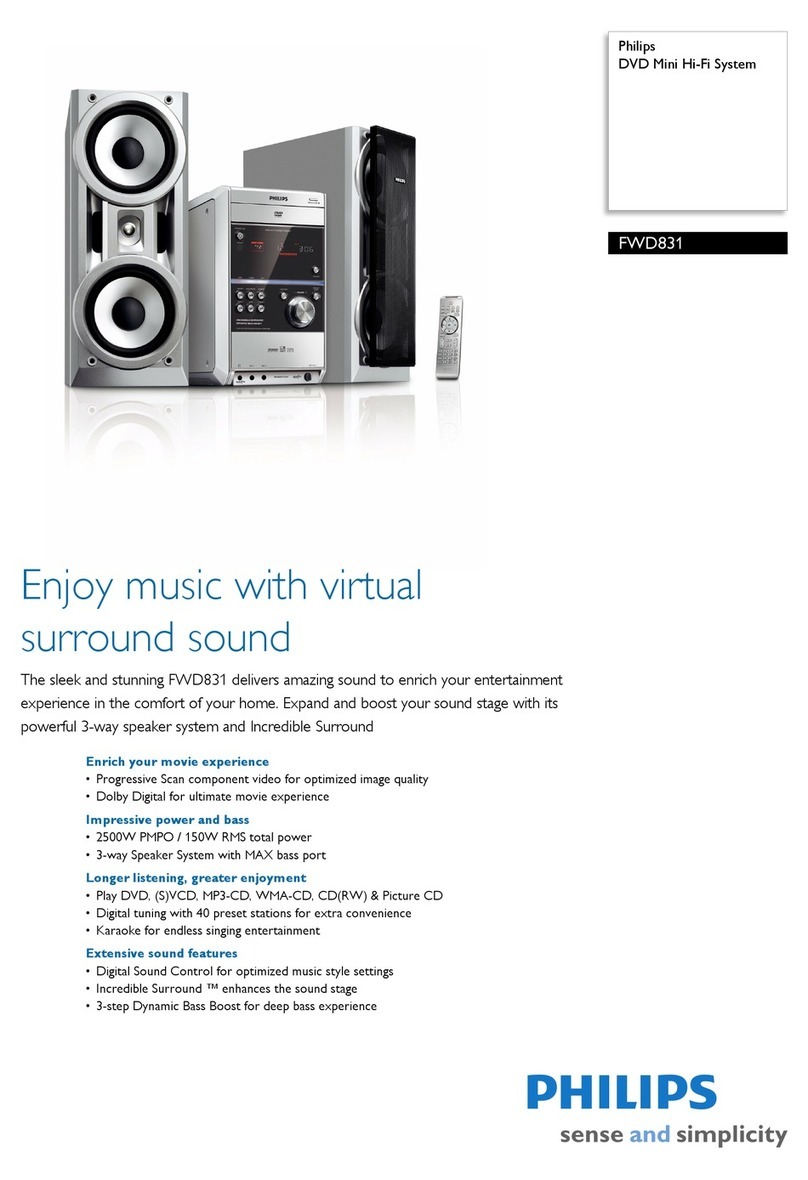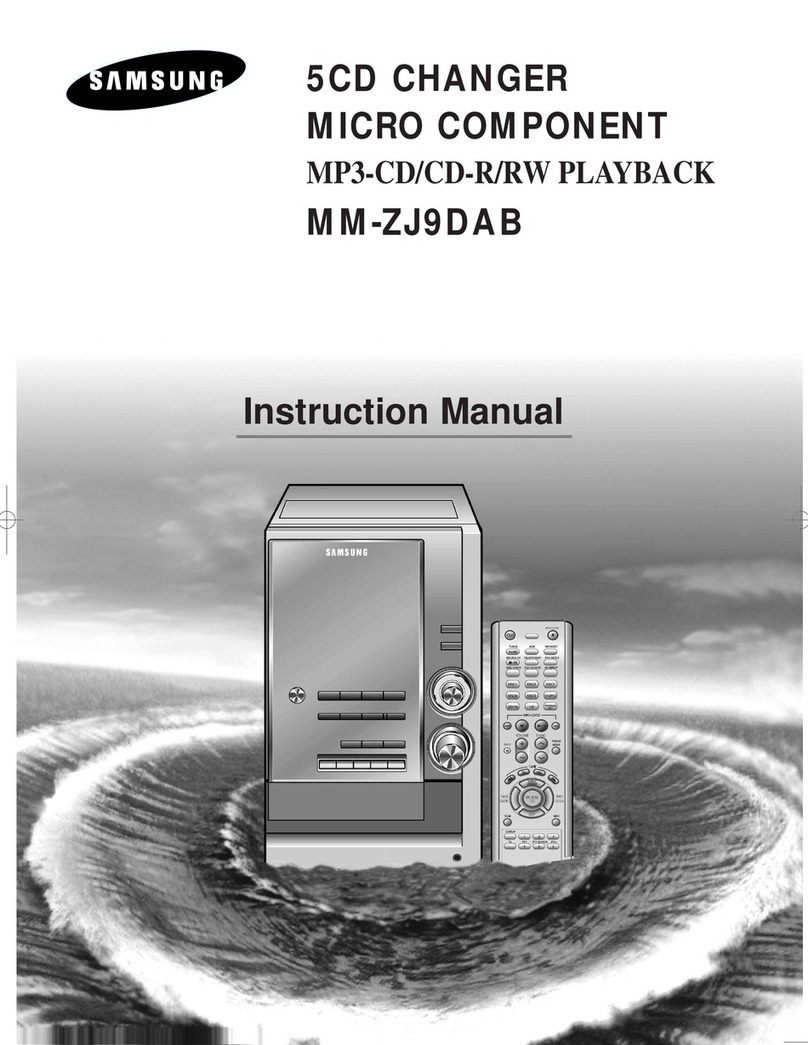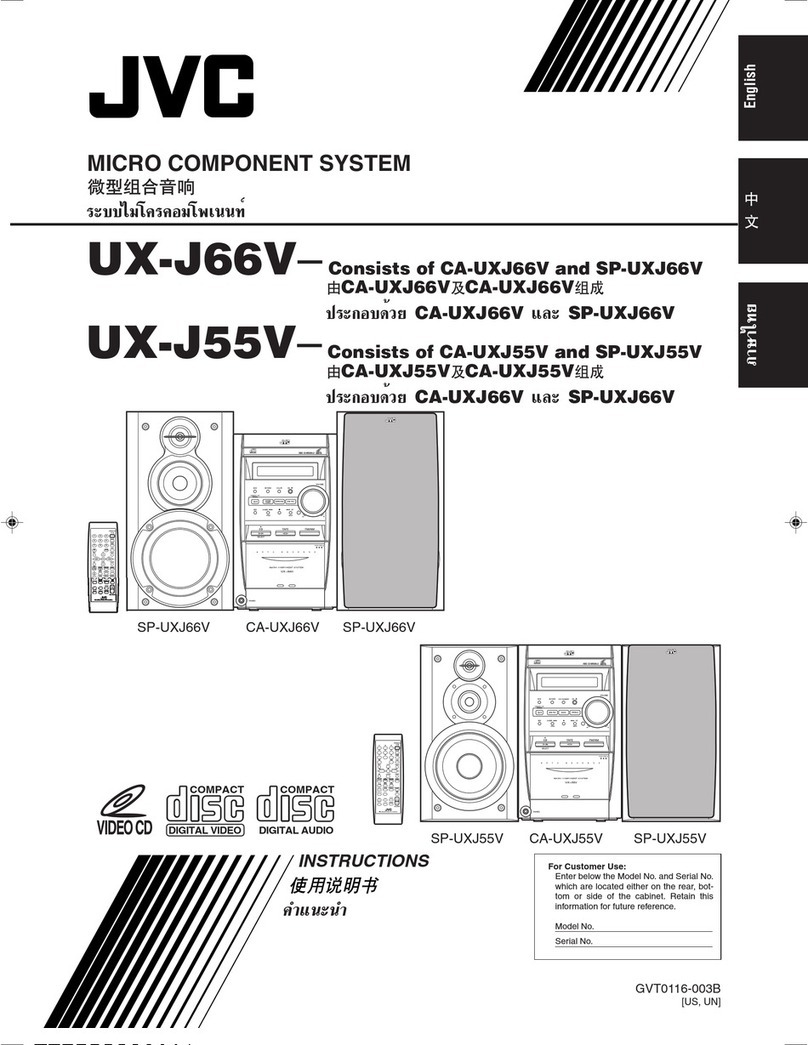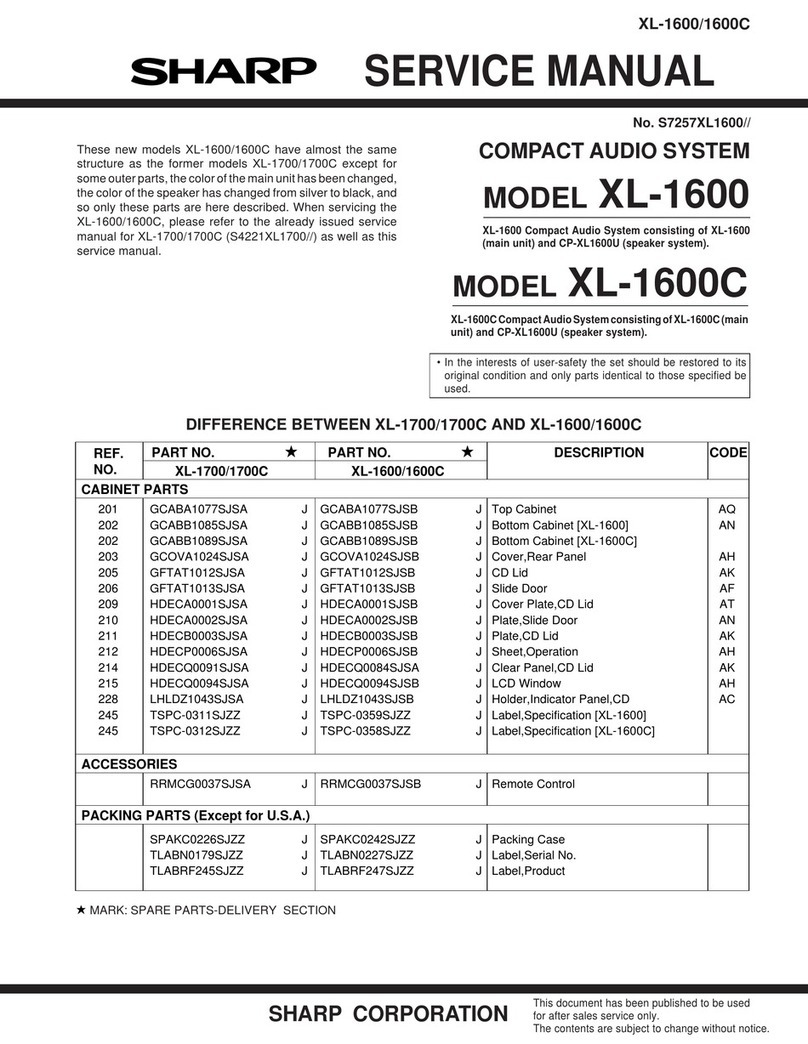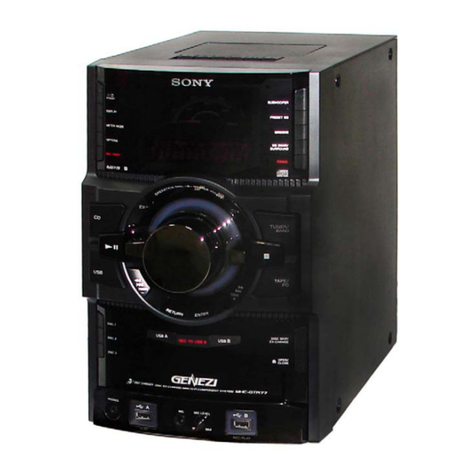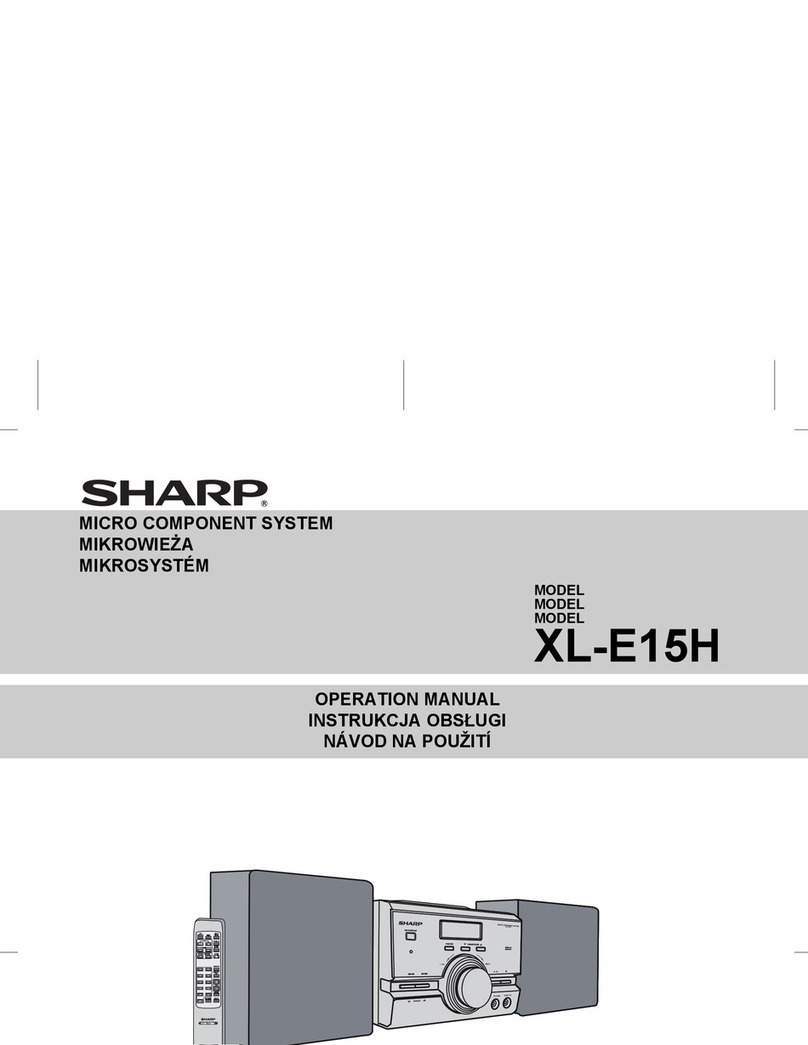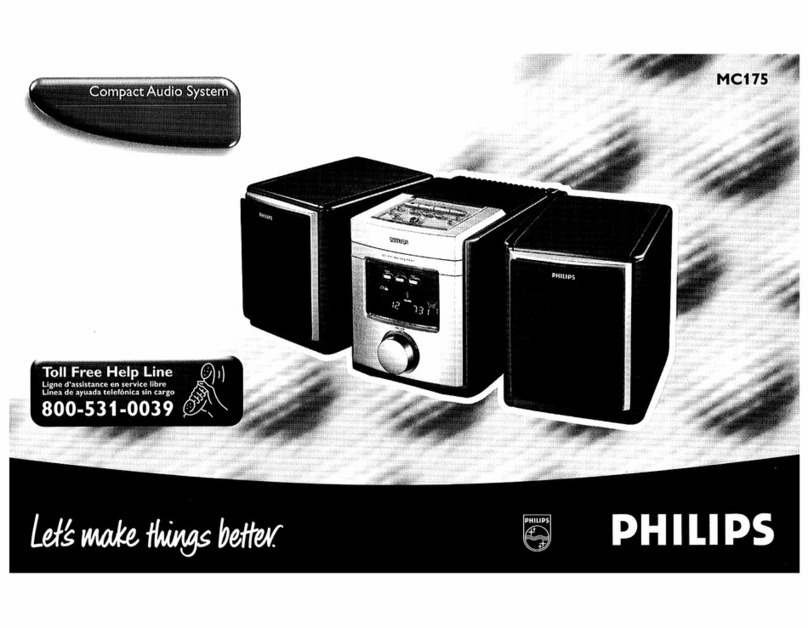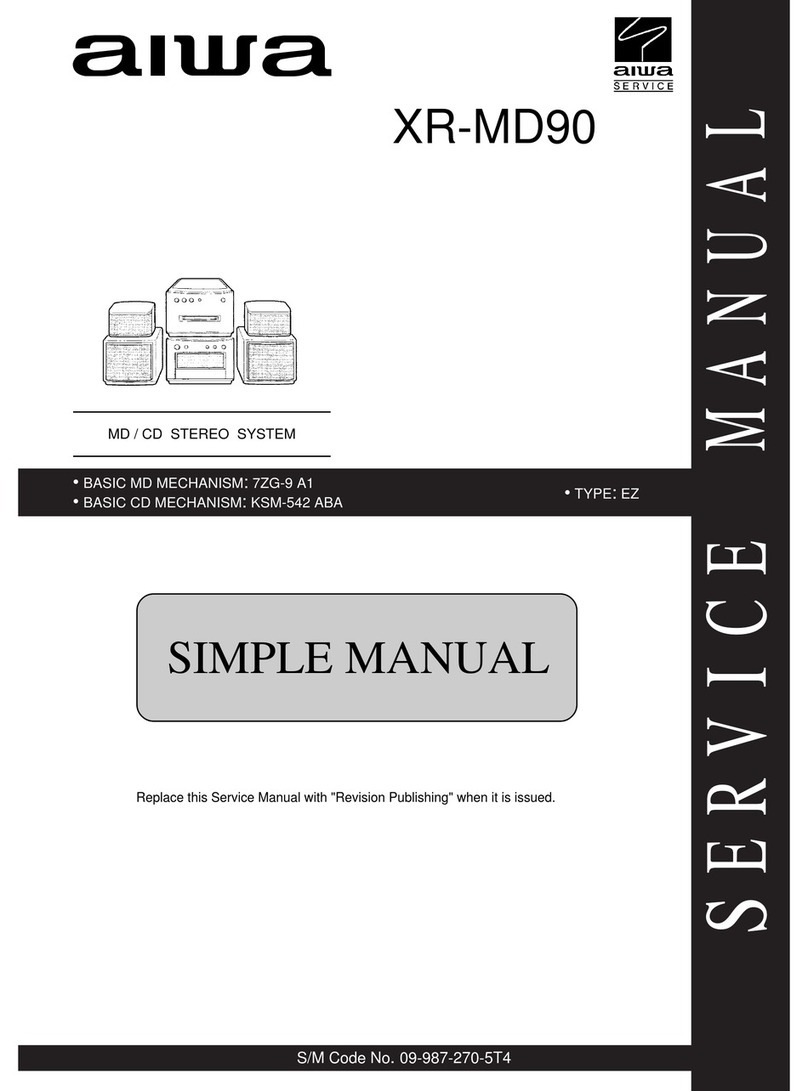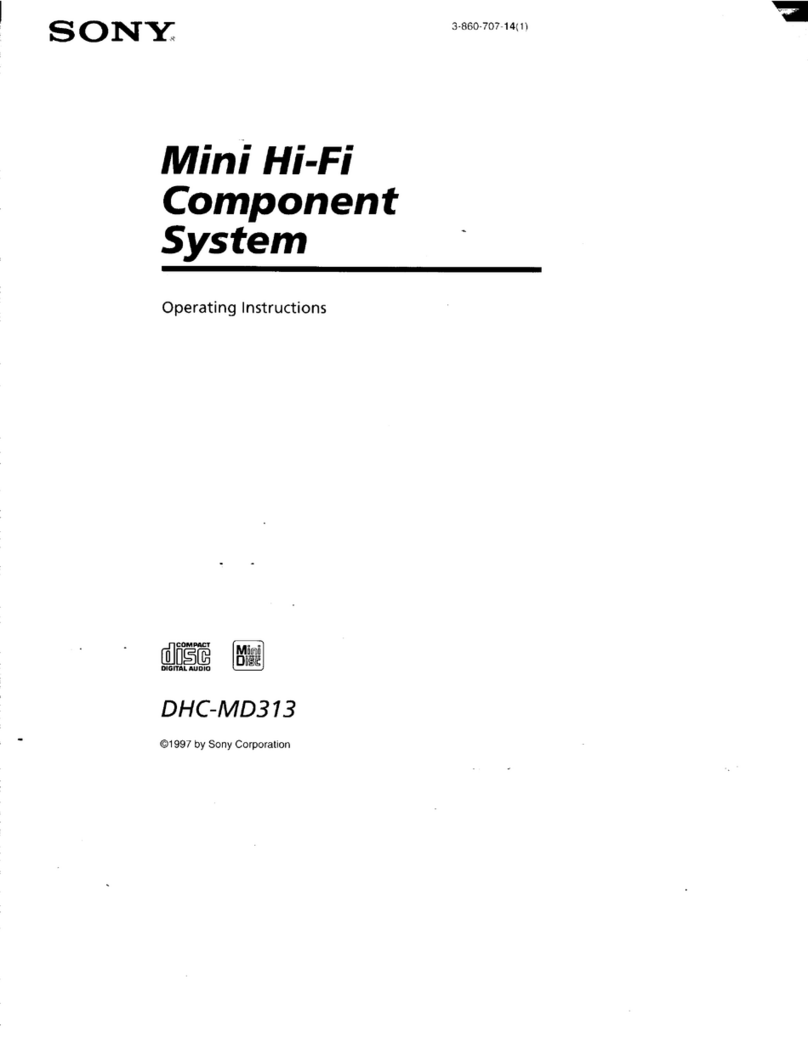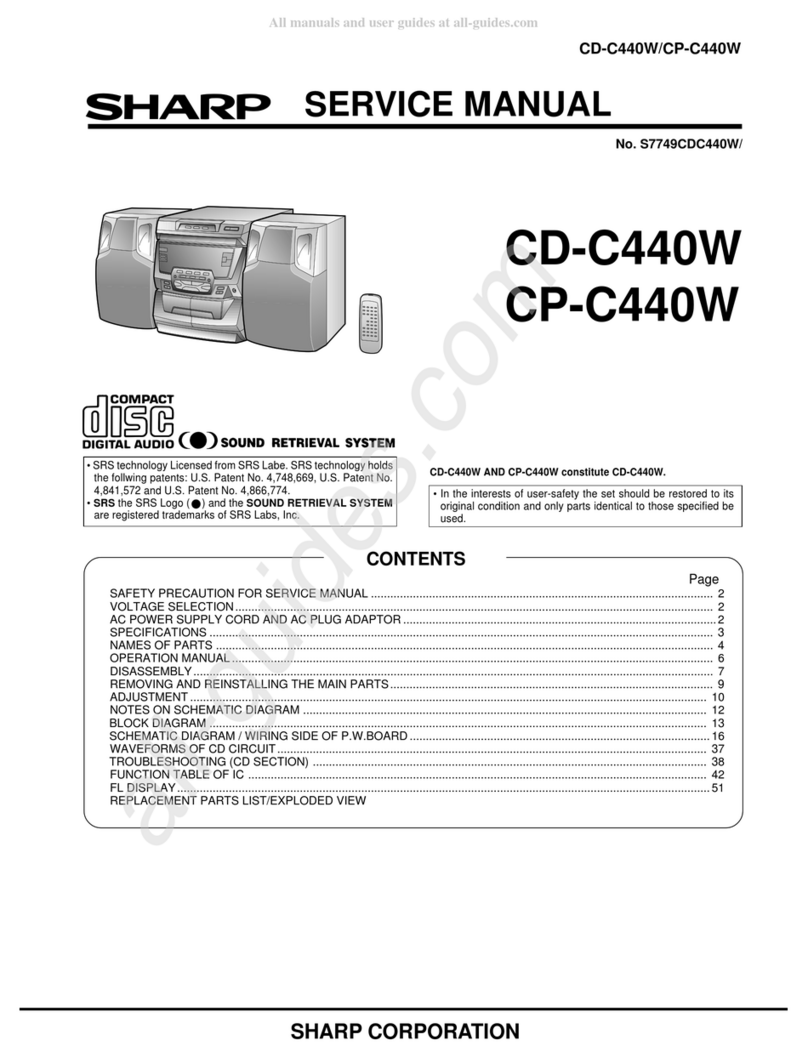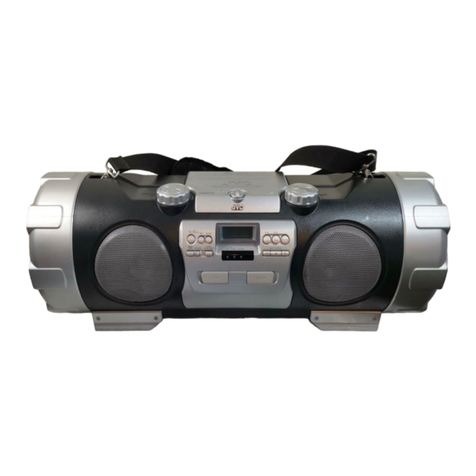RME Audio Fireface 800 User manual

User's Guide
Fireface 800
The most powerful FireWire®audio interface ever!
FireWire 800 / 400 Digital I/O System
10 + 16 + 2 Channels Analog / ADAT / SPDIF Interface
24 Bit / 192 kHz Digital Audio
56 x 28 Matrix Router
MIDI I/O
Stand-Alone Operation
MIDI Remote Control
Stand-Alone MIDI Controlled Operation
TotalMix™
24 Bit / 192 kHz 9
SyncAlign™ZLM™SyncCheck™
SteadyClock™

2 User's Guide Fireface 800 © RME
Important Safety Instructions ..................................5
General
1 Introduction ...............................................................8
2 Package Contents.....................................................8
3 System Requirements ..............................................8
4 Brief Description and Characteristics.....................8
5 First Usage - Quick Start
5.1 Connectors and Front Panel...................................9
5.2 Quick Start ............................................................10
6 Accessories.............................................................10
7 Warranty...................................................................11
8 Appendix..................................................................11
Installation and Operation - Windows
9 Hardware Installation..............................................16
10 Driver and Firmware
10.1 Driver Installation .................................................16
10.2 Driver Update.......................................................17
10.3 De-installing the Drivers.......................................17
10.4 Firmware Update..................................................17
11 Configuring the Fireface
11.1 Settings Dialog – General....................................18
11.2 Settings Dialog – Pitch.........................................20
11.3 Settings Dialog – Analog......................................21
11.4 Clock Modes - Synchronization............................22
11.5 Limit Bandwidth....................................................23
12 Operation and Usage
12.1 Playback...............................................................24
12.2 DVD Playback (AC-3 / DTS) ................................25
12.3 Notes on WDM.....................................................26
12.4 Channel Count under WDM.................................26
12.5 Multi-client Operation ...........................................27
12.6 Digital Recording..................................................28
12.7 Analog Recording.................................................28
13 Operation under ASIO
13.1 General ................................................................29
13.2 Channel Count under ASIO.................................29
13.3 Known Problems..................................................30
14 Using more than one Fireface................................30
15 DIGICheck Windows...............................................31
16 Hotline – Troubleshooting......................................32
Installation and Operation - Mac OS X
17 Hardware Installation..............................................34
18 Driver and Firmware
18.1 Driver Installation .................................................34
18.2 Driver Update.......................................................35
18.3 Firmware Update..................................................35

User's Guide Fireface 800 © RME 3
19 Configuring the Fireface
19.1 Settings Dialog – General....................................36
19.2 Clock Modes - Synchronization...........................39
19.3 Limit Bandwidth....................................................40
20 Mac OS X FAQ
20.1 Round about Driver Installation ...........................41
20.2 Repairing Disk Permissions.................................41
20.3 MIDI doesn't work................................................41
20.4 Various Information..............................................41
20.5 Supported Sample Rates.....................................42
20.6 Channel Count under Core Audio .......................42
20.7 FireWire Compatibility..........................................42
21 Using more than one Fireface ...............................43
22 DIGICheck Mac........................................................43
23 Hotline – Troubleshooting .....................................44
Stand-Alone Operation, Connections and TotalMix
24 Stand-alone Operation
24.1 10-channel AD/DA-Converter..............................46
24.2 4-channel Mic Preamp.........................................46
24.3 Monitor Mixer.......................................................46
24.4 Digital Format Converter......................................46
24.5 Analog/digital Routing Matrix...............................46
25 Analog Inputs
25.1 Line Rear .............................................................47
25.2 Microphone / Line Front.......................................47
25.3 Instrument............................................................48
26 Analog Outputs
26.1 Line ......................................................................49
26.2 Phones.................................................................49
27 Digital Connections
27.1 ADAT ...................................................................50
27.2 SPDIF ..................................................................50
27.3 MIDI .....................................................................51
28 Word Clock
28.1 Word Clock Input and Output ..............................52
28.2 Technical Description and Background...............53
28.3 Cables and Termination.......................................54
28.4 General Operation...............................................54
29 TotalMix: Routing and Monitoring
29.1 Overview..............................................................55
29.2 The User Interface...............................................57
29.3 Elements of a Channel ........................................58
29.4 Tour de TotalMix..................................................58
29.5 Submix View........................................................60
29.6 Mute and Solo......................................................60
29.7 Quick Access Panel.............................................61
29.8 Presets.................................................................61
29.9 Monitor Panel.......................................................63
29.10 Preferences..........................................................63
29.11 Editing the Names ...............................................64
29.12 Hotkeys................................................................65
29.13 Menu Options.......................................................66
29.14 Fader Groups.......................................................66
29.15 Level Meter..........................................................67

4 User's Guide Fireface 800 © RME
30 TotalMix: The Matrix
30.1 Overview ..............................................................68
30.2 Elements of the Matrix View ................................68
30.3 Usage...................................................................68
30.4 Advantages of the Matrix .....................................69
31 TotalMix Super-Features
31.1 ASIO Direct Monitoring (Windows only) ..............69
31.2 Selection and Group based Operation ................70
31.3 Copy Routings to other Channels........................70
31.4 Delete Routings....................................................70
31.5 Recording a Subgroup (Loopback)......................71
31.6 Using external Effects Devices............................72
31.7 MS Processing.....................................................73
32 MIDI Remote Control
32.1 Overview ..............................................................74
32.2 Mapping ...............................................................74
32.3 Setup....................................................................75
32.4 Operation .............................................................75
32.5 MIDI Control.........................................................76
32.6 Loopback Detection .............................................77
32.7 Stand-Alone MIDI Control....................................78
Technical Reference
33 Tech Info ..................................................................82
34 Technical Specifications
36.1 Analog..................................................................83
36.2 MIDI......................................................................84
36.3 Digital ...................................................................84
36.4 Digital Inputs ........................................................85
36.5 Digital Outputs......................................................86
36.6 General ................................................................86
35 Technical Background
35.1 Lock and SyncCheck ...........................................87
35.2 Latency and Monitoring........................................88
35.3 FireWire Audio .....................................................89
35.4 Number of Channels and Bus Load.....................90
35.5 DS – Double Speed .............................................91
35.6 QS – Quad Speed................................................91
35.7 AES/EBU – SPDIF...............................................92
35.8 Noise Level in DS / QS Mode..............................93
35.9 SteadyClock.........................................................93
36 Diagrams
36.1 Block Diagram Fireface........................................94
36.2 Connector Pinouts................................................95

User's Guide Fireface 800 © RME 5
Important Safety Instructions
ATTENTION! Do not open chassis – risk of electric shock
The unit has non-isolated live parts inside. No user serviceable parts inside.
Refer service to qualified service personnel.
Mains
• The device must be earthed – never use it without proper grounding
• Do not use defective power cords
• Operation of the device is limited to the manual
• Use same type of fuse only
To reduce the risk of fire or electric shock do not expose this device to rain or
moisture. Prevent moisture and water from entering the device. Never leave
a pot with liquid on top of the device. Do not use this product near water, i. e.
swimming pool, bathtub or wet basement. Danger of condensation inside –
don't turn on before the device has reached room temperature.
Installation
Surface may become hot during operation – ensure sufficient ventilation.
Avoid direct sun light and do not place it near other sources of heat, like ra-
diators or stoves. When mounting in a rack, leave some space between this
device and others for ventilation.
Unauthorized servicing/repair voids warranty. Only use accessories
specified by the manufacturer.
Read the manual completely. It includes all information necessary
to use and operate this device.

6 User's Guide Fireface 800 © RME

User's Guide Fireface 800 © RME 7
User's Guide
Fireface 800
General

8 User's Guide Fireface 800 © RME
1. Introduction
Thank you for choosing the Fireface 800. This unique audio system is capable of transferring
analog and digital audio data directly to a computer from practically any device. The latest Plug
and Play technology guarantees a simple installation, even for the inexperienced user. The
numerous unique features and well thought-out configuration dialog puts the Fireface 800 at the
very top of the range of computer-based audio interfaces.
The package contains drivers for Windows XP/Vista/7/8 and Mac OS X x86 (Intel).
Our high-performance philosophy guarantees maximum system performance by executing as
many functions as possible not in the driver (i.e. the CPU), but directly within the audio hard-
ware.
2. Package Contents
Please check that your Fireface 800 package contains each of the following:
•RME Driver CD
•Cable IEEE1394a (FW400), 4 m (13 ft)
•Power cord
•Manual
•1 optical cable (TOSLINK), 2 m (6.6 ft)
3. System Requirements
•Windows XP or higher, Mac OS X Intel (10.6 or higher)
•1 OHCI compatible FireWire Port 400 (1394a) or 800 (1394b)
4. Brief Description and Characteristics
•Enhanced Mixed Mode: Analog, ADAT and SPDIF I/O simultaneously usable
•8 buffer sizes/latencies available: 1.0 / 1.5 / 2.1 / 3 / 6 / 12 / 17 / 23 ms
•All settings can be changed in real-time
•8 channels 96 kHz/24 bit Record/Playback via ADAT optical (S/MUX)
•Clock modes slave and master
•Automatic and intelligent master/slave clock control
•Unsurpassed Bitclock PLL (audio synchronization) in ADAT mode
•Word clock input and output
•TotalMix for latency-free submixes and perfect ASIO Direct Monitoring
•TotalMix: 1568 channel mixer with 42 bit internal resolution
•SyncAlign guarantees sample aligned and never swapping channels
•SyncCheck tests and reports the synchronization status of input signals
•1 x MIDI I/O, 16 channels high-speed MIDI
•1 x Hi-power headphone output
•DIGICheck DSP: Level meter in hardware, peak- and RMS calculation
•Optional Time Code module (TCO) for external Video-/SMPTE synchronization

User's Guide Fireface 800 © RME 9
5. First Usage – Quick Start
5.1 Connectors and Front Panel
The front of the Fireface 800 features an instrument input, microphone inputs and line inputs
with gain pots, a stereo headphone output with volume pot, and several status LEDs.
MIDI/I indicates MIDI data received by the MIDI input.
MIDI/O indicates MIDI data sent to the MIDI output.
The Digital State LEDs (WC, SPDIF,
ADAT, TCO) indicate a valid input signal
separately for each digital input. Additionally,
RME's exclusive SyncCheck indicates if one
of these inputs is locked, but not synchro-
nous to the others, in which case the LED
will flash. See also chapter 11.4/19.3, Clock
Modes - Synchronization.
The red HOST LED lights up when the Fireface 800 has been switched on, signalling the pres-
ence of operating voltage. At the same time it operates as error LED, in case the FireWire con-
nection hasn't been initialised yet, or has been interrupted (error, cable not connected etc.).
Phones are low impedance line outputs of highest quality. They provide a sufficient and undis-
torted volume when used with headphones.
The rear panel of the Fireface
800 features eight analog
inputs and outputs, the power
socket, and all digital inputs
and outputs:
ADAT1 I/O (TOSLINK)
ADAT2 I/O (TOSLINK): Can also be used as optical SPDIF input and output, if set up accord-
ingly in the Settings dialog. The Settings dialog is started by clicking on the fire symbol in the
Task Bar's system tray.
SPDIF I/O coaxial (RCA): Fully AES/EBU compatible by transformer-coupling and level adjust-
ment. The Fireface 800 accepts the commonly used digital audio formats, SPDIF as well as
AES/EBU.
Word Clock I/O (BNC): A push switch activates internal termination (75 Ohms). When termina-
tion is activate the yellow LED besides the switch lights up.
IEC receptacle for mains power connection. The specially developed, internal hi-performance
switch mode power supply makes the Fireface operate in the range of 100V to 240V AC. It is
short-circuit-proof, has an integrated line-filter, is fully regulated against voltage fluctuations,
and suppresses mains interference.

10 User's Guide Fireface 800 © RME
5.2 Quick Start
After the driver installation (chapter 10 / 19) connect the TRS-jacks or the XLR connectors with
the analog signal source. The input sensitivity of the rear inputs can be changed in the Settings
dialog (Input Level), assuring the highest signal to noise ratio will be achieved. Try to achieve
an optimum input level by adjusting the source itself. Raise the source’s output level until the
peak level meters in TotalMix reach about –3 dB.
The analog line inputs of the Fireface 800 can be used with +4 dBu and -10 dBV signals. The
electronic input stage can handle balanced (XLR, TRS jacks) and unbalanced (TS jacks) input
signals correctly.
The front's inputs signal level can be optimized using the Fireface's Gain pots. A Signal LED
and a Clip LED help to find the correct level adjustment.
The Fireface's digital outputs provide SPDIF (AES/EBU compatible) and ADAT optical signals
at the corresponding ports.
On the analog playback side (the DA side), a coarse adjustment of the analog output level at
the rear jacks is available in the Settings dialog (Output Level).
The output signal of channels 9/10 is available on the front. Their output level can be set using
the VOL pot. This output is a very low impedance type, which can also be used to connect
headphones.
The function Store in Flash Memory (Settings dialog) and Flash current mixer state (TotalMix)
allow to store the current settings into the Fireface 800. The unit then remembers all settings,
and loads these automatically when switched on. With this, the Fireface 800 can be used stand-
alone after setting it up accordingly, replacing lots of dedicated devices (see chapter 24).
6. Accessories
RME offers several optional components for the Fireface 400:
Part Number Description
Standard FireWire 400 cable, both sides 6-pin male:
FWK660100BL FireWire cable IEEE1394a 6M/6M, 1 m (3.3 ft)
FWK660300BL FireWire cable IEEE1394a 6M/6M, 3 m (9.9 ft)
FWK660400BL FireWire cable IEEE1394a 6M/6M, 4 m (13 ft)
FireWire 400 cable, 4-pin male to 6-pin male (4-pin sockets are found on most laptops):
FWK460100BL FireWire cable IEEE1394a 4M/6M, 1 m (3.3 ft)
FWK460300BL FireWire cable IEEE1394a 4M/6M, 3 m (9.9 ft)
FWK460400BL FireWire cable IEEE1394a 4M/6M, 4 m (13 ft)
Note: Cable longer than 15 ft (4.5m) is not specified for FireWire.

User's Guide Fireface 800 © RME 11
Optical cable for SPDIF and ADAT operation:
OK0050 Optical cable, TOSLINK, 0.5 m (1.6 ft)
OK0100 Optical cable, TOSLINK, 1 m (3.3 ft)
OK0200 Optical cable, TOSLINK, 2 m (6.6 ft)
OK0300 Optical cable, TOSLINK, 3 m (9.9 ft)
OK0500 Optical cable, TOSLINK, 5 m (16.4 ft)
OK1000 Optical cable, TOSLINK, 10 m (33 ft)
Time Code Option to be inserted in the rear slot, adding LTC and Video synchronization inputs
to the Fireface.
TCOFF Time Code Option Fireface
7. Warranty
Each individual Fireface 800 undergoes comprehensive quality control and a complete test at
IMM before shipping. The usage of high grade components should guarantee a long and trou-
ble-free operation of the unit.
If you suspect that your product is faulty, please contact your local retailer.
Audio AG grants a limited manufacturer warranty of 6 months from the day of invoice showing
the date of sale. The length of the warranty period is different per country. Please contact your
local distributor for extended warranty information and service. Note that each country may
have regional specific warranty implications.
In any case warranty does not cover damage caused by improper installation or maltreatment -
replacement or repair in such cases can only be carried out at the owner's expense.
No warranty service is provided when the product is not returned to the local distributor in the
region where the product had been originally shipped.
Audio AG does not accept claims for damages of any kind, especially consequential damage.
Liability is limited to the value of the Fireface 800. The general terms of business drawn up by
Audio AG apply at all times.
8. Appendix
RME news, driver updates and further product information are available on our website:
http://www.rme-audio.com
Distributor: Audio AG, Am Pfanderling 60, D-85778 Haimhausen, Tel.: (49) 08133 / 918170
Manufacturer:
IMM Elektronik GmbH, Leipziger Strasse 32, D-09648 Mittweida

12 User's Guide Fireface 800 © RME
Trademarks
All trademarks, registered or otherwise, are the property of their respective owners. RME,
DIGICheck and Hammerfall are registered trademarks of RME Intelligent Audio Solutions.
DIGI96, SyncAlign, ZLM, SyncCheck, TMS, TotalMix and Fireface are trademarks of RME Intel-
ligent Audio Solutions. Alesis and ADAT are registered trademarks of Alesis Corp. ADAT optical
is a trademark of Alesis Corp. Microsoft, Windows, Windows 2000, Windows XP, Windows
Vista and Windows 7 are registered trademarks or trademarks of Microsoft Corp. Steinberg,
Cubase and VST are registered trademarks of Steinberg Media Technologies GmbH. ASIO is a
trademark of Steinberg Media Technologies GmbH. FireWire, the FireWire symbol and the
FireWire logo are trademarks of Apple Computer, Inc.
Copyright ©Matthias Carstens, 08/2012. Version 3.2
Current driver version: Windows: 3.068, Mac OS X: 3.09
Firmware 2.77
Although the contents of this User’s Guide have been thoroughly checked for errors, RME can
not guarantee that it is correct throughout. RME does not accept responsibility for any mislead-
ing or incorrect information within this guide. Lending or copying any part of the guide or the
RME Driver CD, or any commercial exploitation of these media without express written permis-
sion from RME Intelligent Audio Solutions is prohibited. RME reserves the right to change
specifications at any time without notice.

User's Guide Fireface 800 © RME 13
CE / FCC Compliance
CE
This device has been tested and found to comply with the limits of the European Council Direc-
tive on the approximation of the laws of the member states relating to electromagnetic compati-
bility according to RL2004/108/EG, and European Low Voltage Directive RL2006/95/EG.
FCC
This equipment has been tested and found to comply with the limits for a Class B digital device,
pursuant to Part 15 of the FCC Rules. These limits are designed to provide reasonable protec-
tion against harmful interference in a residential installation. This equipment generates, uses,
and can radiate radio frequency energy and, if not installed and used in accordance with the
instructions, may cause harmful interference to radio communications. However, there is no
guarantee that interference will not occur in a particular installation. If this equipment does
cause harmful interference to radio or television reception, which can be determined by turning
the equipment off and on, the user is encouraged to try to correct the interference by one or
more of the following measures:
- Reorient or relocate the receiving antenna.
- Increase the separation between the equipment and receiver.
- Connect the equipment into an outlet on a circuit different from that to which the receiver is
connected.
- Consult the dealer or an experienced radio/TV technician for help.
RoHS
This product has been soldered lead-free and fulfils the requirements of the RoHS directive.
ISO 9001
This product has been manufactured under ISO 9001 quality management. The manufacturer,
IMM Elektronik GmbH, is also certified for ISO 14001 (Environment) and ISO 13485 (medical
devices).
Note on Disposal
According to the guide line RL2002/96/EG (WEEE – Directive on Waste
Electrical and Electronic Equipment), valid for all european countries,
this product has to be recycled at the end of its lifetime.
In case a disposal of electronic waste is not possible, the recycling can
also be done by IMM Elektronik GmbH, the manufacturer of the Fireface
800.
For this the device has to be sent free to the door to:
IMM Elektronik GmbH
Leipziger Straße 32
D-09648 Mittweida
Germany
Shipments not prepaid will be rejected and returned on the original sender's costs.

14 User's Guide Fireface 800 © RME

User's Guide Fireface 800 © RME 15
User's Guide
Fireface 800
Installation and Operation - Windows

16 User's Guide Fireface 800 © RME
9. Hardware Installation
Desktop Computer
•Use the power cord to connect the Fireface with any suitable power outlet.
•Connect computer and Fireface using the supplied 6-pin FireWire cable (IEEE1394a). In
case your computer does not have any FireWire port, PCI and PCI Express cards with Fire-
Wire ports are available at your local computer shop.
•Power on the computer. Switch on the Fireface when Windows shows the desktop.
Notebook
•Use the power cord to connect the Fireface with any suitable power outlet.
•Connect computer and Fireface using the supplied 6-pin FireWire cable (IEEE1394a). In
case your notebook does not have any FireWire port, CardBus and ExpressCard cards can
be used to add them. In case your notebook does not have a 6-pin jack, or did not include a
6-pin to 4-pin adapter: such adapters are available in your local computer store.
•Power-on the notebook. Switch on the Fireface when Windows shows the desktop.
10. Driver and Firmware
10.1 Driver Installation
After the Fireface has been switched on, (see 9. Hardware Installation) the green arrow symbol
appears in the task bar (dialog Remove hardware) because Windows has detected an external
hardware.
Insert the RME Driver CD into your CD-ROM drive, and follow further instructions which appear
on your computer screen. The driver files are located in the directory \Fireface_FW on the RME
Driver CD. Windows now installs the driver of the Fireface 800 and registers it as a new audio
device in the system.
After a reboot, the symbols of mixer and Settings dialog will
appear in the task bar. The red Host error LED extinguishes.
In Windows 7 Microsoft removed the automatic start of the Driver Software Update dialog. The-
refore this dialog has to be started manually after the failed driver installation. Hit the Win key,
type 'Device Manager', start the Device Manager by selecting it from the list and hit Enter.
The device is shown with a yellow warning symbol. Usually it is already found in the correct
category, Sound, Video and Game Controller (Plug & Play detects a multimedia device). Right
click on the device and select 'Update Driver Software' from the context menu.
The dialog Update Driver Software appears. Now follow the instructions given below.

User's Guide Fireface 800 © RME 17
Possible reasons why a Fireface is not found automatically:
•The FireWire port is not active in the system (drivers of the FireWire PCI or CardBus card
have not been installed)
•The FireWire cable is not, or not correctly inserted into the socket
•No power. After switching the Fireface on, at least the red Host error LED has to be lit.
10.2 Driver Update
When facing problems with the automatic driver update, the user-driven way of driver installa-
tion will work.
Under >Control Panel /System /Device Manager /Sound, Video and Game Controllers /RME
Fireface 800 /Properties /Driver< you'll find the 'Update Driver' button.
XP: Select 'Install from a list or specific location (advanced)', click 'Next', select 'Don't
search I will choose the driver to install', click 'Next', then 'Have Disk'. Now point to the
driver update's directory.
Vista/7: Select 'Browse my computer for driver software', then 'Let me pick from a list of
device drivers from my computer', then 'Have Disk'. Now point to the driver update's direc-
tory.
This method also allows for the installation of older drivers than the currently installed ones.
10.3 De-installing the Drivers
A de-installation of the Fireface's driver files is not necessary – and not supported by Windows
anyway. Thanks to full Plug & Play support, the driver files will not be loaded after the hardware
has been removed. If desired these files can then be deleted manually.
Unfortunately Windows Plug & Play methods do not cover the additional autorun entries of To-
talMix, the Settings dialog, and the registration of the ASIO driver. These entries can be re-
moved from the registry by a software de-installation request. This request can be found (like all
de-installation entries) in Control Panel, Software. Click on the entry 'RME Fireface'.
10.4 Firmware Update
The Flash Update Tool updates the firmware of the Fireface 800 to the latest version. It requires
an already installed driver.
Start the program fireface_fut.exe. The Flash Update Tool displays the current revision of the
Fireface's firmware, and whether it needs an update or not. If so, then simply press the 'Update'
button. A progress bar will indicate when the flash process is finished (Verify Ok).
If more than one Fireface is installed, all units can be flashed by changing to the next tab and
repeating the process.
After the update the unit needs to be reset. This is done by powering down the Fireface for a
few seconds. Attention: the Fireface should not be switched off for less than 5 seconds, be-
cause Windows completely unloads the driver, which takes some time to finish.
A reboot of the computer is not necessary.

18 User's Guide Fireface 800 © RME
When the update fails (status: failure), the unit's second BIOS will be used from the next cold
boot on (Secure BIOS Technology). Therefore the unit stays fully functional. The flash process
should then be tried again on a different computer.
11. Configuring the Fireface
11.1 Settings Dialog - General
Configuration of the Fireface 800 is done via its own settings dialog. The panel 'Settings' can be
opened:
•by clicking on the fire symbol in the Task Bar's system tray
The mixer of the Fireface 800 (TotalMix) can be opened:
•by clicking on the mixer icon in the Task Bar's system tray
The hardware of the Fireface 800 offers a number of helpful, well thought-of practical functions
and options which affect how the card operates - it can be configured to suit many different
requirements. The following is available in the 'Settings' dialog:
•Input selection
•Level of analog I/Os
•Configuration of digital I/Os
•Synchronization behaviour
•State of input and output
•Current sample rate
•Latency
Any changes made in the Settings
dialog are applied immediately -
confirmation (e.g. by clicking on OK
or exiting the dialog) is not required.
However, settings should not be
changed during playback or record
if it can be avoided, as this can
cause unwanted noises.
Also, please note that even in 'Stop'
mode, several programs keep the
recording and playback devices
open, which means that any new
settings might not be applied imme-
diately.
The status display at the bottom of
the dialog box gives precise
information about the current status
of the system, and the status of all
digital input signals.
The tab About includes information about the current driver and firmware version.

User's Guide Fireface 800 © RME 19
Buffer Size
The setting Buffer Size determines the latency between incoming and outgoing ASIO and WDM
data, as well as affecting system stability (see chapter 13/14).
Bandwidth
Allows to reduce the amount of bandwidth used on the FireWire bus. See chapter 11.5.
All channels (default) activates all 28 input and output channels.
Analog + SPDIF + ADAT1 disables channels 21–28 (ADAT2).
Analog + SPDIF activates all 10 analog channels plus SPDIF.
Analog 1-8 activates only the first eight analog channels.
Errors does not refer to buffer errors, but FireWire transmission errors. The display will be reset
on any start of a playback/record. More information can be found in chapter 35.3.
Output Format
Word
The word clock output signal usually equals the current sample rate. Selecting Single Speed
causes the output signal to always stay within the range of 32 kHz to 48 kHz. So at 96 kHz and
192 kHz sample rate, the output word clock is 48 kHz.
ADAT2
This optical TOSLINK output can operate as ADAT or SPDIF output.
SPDIF
The SPDIF output can have the Channel Status Consumer or Professional and Emphasis indi-
cation. For further details please refer to chapter 27.2.
Input Source
SPDIF
Defines the input for the SPDIF signal. 'Coaxial' relates to the RCA socket, 'ADAT2' to the sec-
ond optical TOSLINK input.
Clock Mode
Sample Rate
Sets the currently used sample rate. Offers a central and comfortable way of configuring the
sample rate of all WDM devices to the same value, as since Vista this is no longer supported to
be done by the audio program. However, an ASIO program can still set the sample rate by it-
self.
At ongoing record/playback the selection is greyed out, so no change is possible.
Clock Source
The unit can be configured to use its own clock (Internal = Master), or one of the input signals
(Word, Optical, SPDIF coax., TCO). If the selected source isn't available, the unit will change to
the next available one (AutoSync). If none is available then the internal clock is used. The cur-
rent clock source is displayed to the right.
Pitch
More information on Pitch is available in chapter 11.2.
Input Status
Indicates for each input (Word, optical, SPDIF coax, TCO) whether there is a valid signal (Lock,
No Lock), or if there is a valid and synchronous signal (Sync). The second row shows the sam-
ple frequency measured by the hardware. In Clock Mode the clock reference is shown (Cur-
rent…). See also chapter 35.1.

20 User's Guide Fireface 800 © RME
Store in Flash
A click on this button transmits all current settings into the flash memory of the Fireface. Those
settings then become active directly after power-on, and also in stand-alone operation.
Read Flash
A click on this button causes all settings to change to the ones stored in the flash memory of the
Fireface.
11.2 Settings Dialog - Pitch
Usually soundcards and audio interfaces generate their internal clock (master mode) by a
quartz. Therefore the internal clock can be set to 44.1 kHz or 48 kHz, but not to a value in be-
tween. SteadyClock, RME's sensational Low Jitter Clock System, is based on a Direct Digital
Synthesizer (DDS). This superior circuitry can generate nearly any frequency with highest pre-
cision.
DDS has been implemented into the Fireface with regard to the needs of professional video
applications, as well as to maximum flexibility. The section Pitch includes both a list of typical
video frequencies (so called pull up/pull down at 0.1% and 4%) and a fader to freely change the
basic sample rate in steps of 1 Hz (!) over a range of +/- 5%.
The Pitch function requires the Fireface to be in clock mode Master! The frequency setting
will only be applied to this one specific Fireface!
Changing the sample rate during record/playback often results in a loss of audio, or brings
up warning messages of the audio software. Therefore the desired sample rate should be
set at least coarsely before starting the software.
Coarse
Coarse modification in steps of 50 Hz
is done by clicking with the mouse to
the left and right of the fader knob.
Fine
Fine modification in steps of 1 Hz is
done by using the left/right cursor
keys.
Reset
Ctrl key plus left mouse click.
Application examples
Pitch allows for a simultaneous change of speed and tune during record and playback. From
alignment to other sources up to creative effects – everything is possible.
Pitch enables you to intentionally de-tune the complete DAW. This way, the DAW can match
instruments which have a wrong or unchangeable tuning.
Pitch allows for the change of the sample rate of all WDM devices at the same time. Since Vista
this is no longer possible via the audio program, thus requires a manual reconfiguration of all
WDM devices. Changing the sample rate from the Settings dialog solves this problem. As the
change within the system requires some time, record/playback should not be started immedi-
ately, but not before 5 seconds after a change.
Other manuals for Fireface 800
2
Table of contents
Other RME Audio Stereo System manuals

